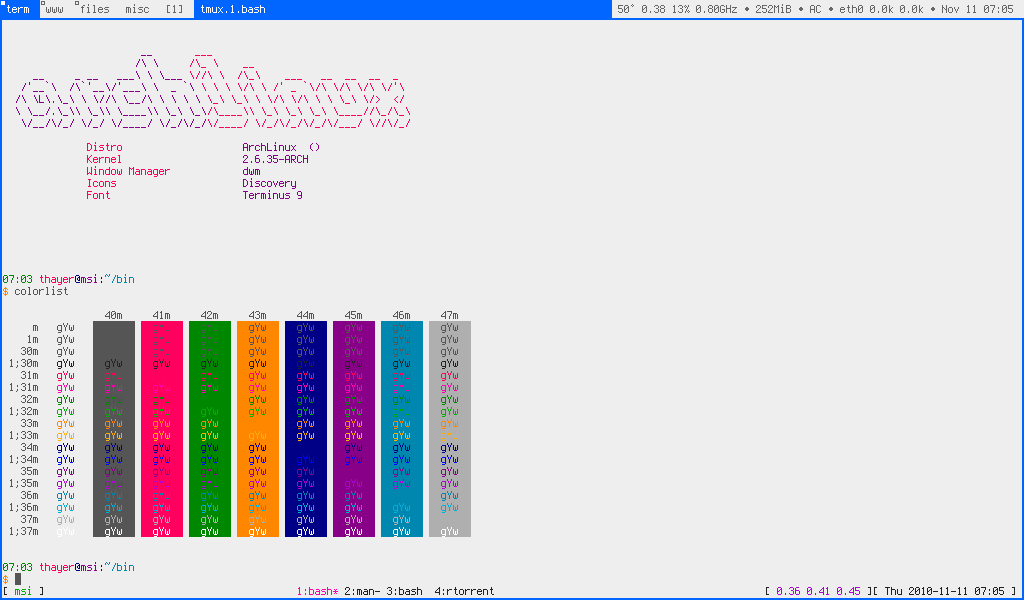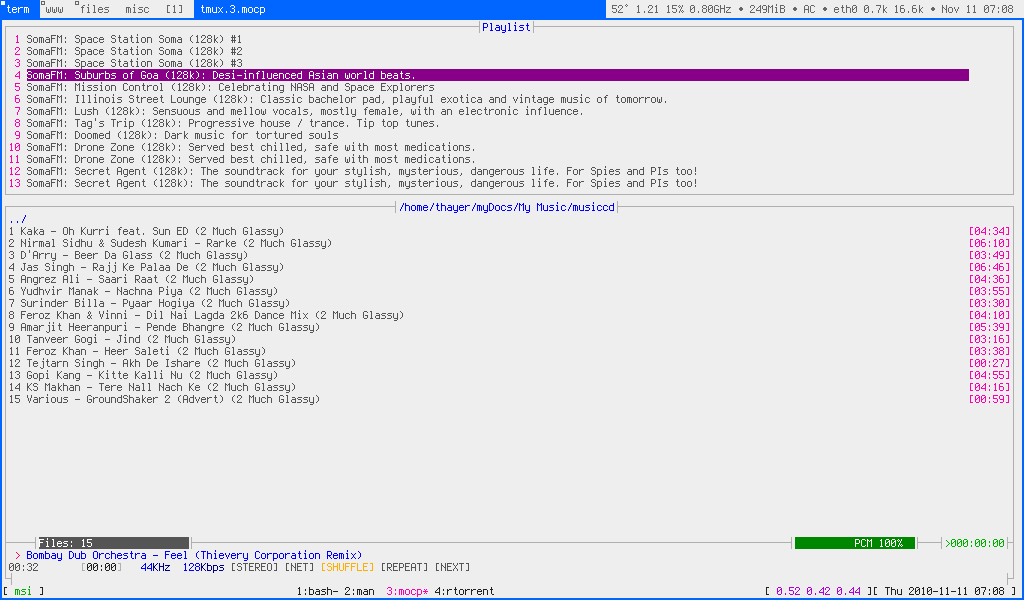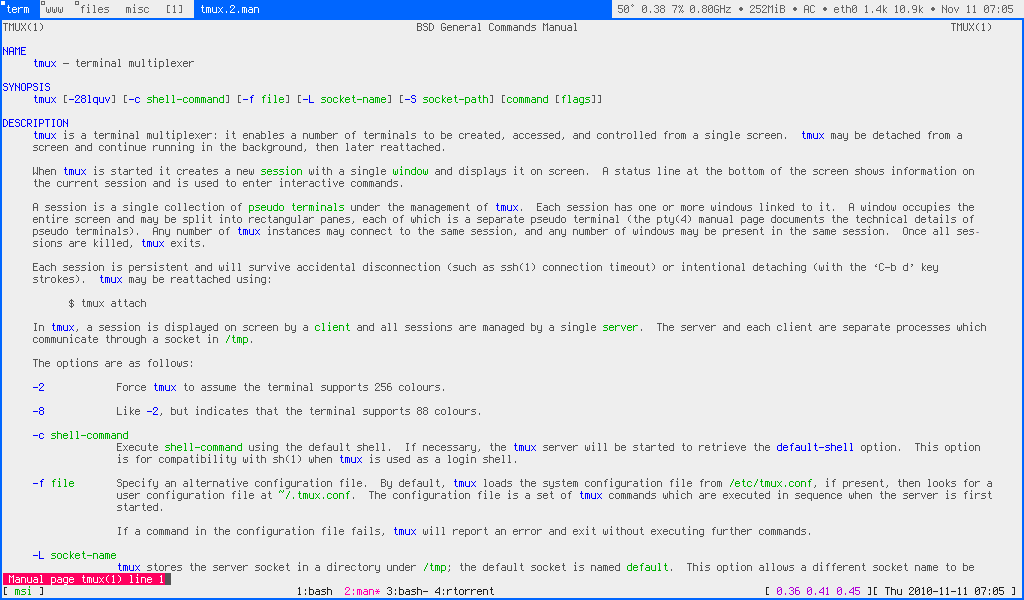I had an Aspire One D270 laptop with a 32-bit Intel Atom CPU and 1 gigabyte of RAM, so I installed Debian with Xfce on it, but even then it’s running way too slow.
Is there anything I can do to make the laptop faster and more responsive given its limited memory?
You need something like DamnSmallLinux, not Debian. Debian users about 800 MB of RAM with XFce, on a clean boot. It requires a minimum of 2 GB with a modern browser (one tab, 4+ GB with more tabs). DamnSmallLinux uses about 128 MB RAM on a clean boot, and with the Netfront browser about half a gig. Definitely better for such a laptop than any modern distro.
Antix linux would also work great, and DSL is based on it.
Looking up the specs of a D270, looks like the memory is upgradable.
It also looks like the Intel Atom N2600 it has (from my reading) is actually a 64-bit processor
I’d probably say you shouldn’t have much trouble finding a bigger DDR3 memory stick for it for dirt cheap or free from an e-wasted notebook
Ultimately it depends if the performance loss you’re finding is memory limited or CPU limited right now, but I would think that giving it 2 or 4GB + giving it 64-bit would go a long way
SSD upgrade
And then ZRAM and swap like hell
I thought it’s either swap or ZRAM - could you use both at the same time?
Yes Fedora uses swap and zram by default. Just compresses the memory in RAM (more memory available) and on disk (less data written, less wear)
Wow, that’s supercool actually! I had no idea…
Won’t that kill the SSD on short notice? Or can they make do with it for years?
I mean, worth the tradeoff? Zram would just make the cpu work more. Swap… kill the ssd
But over time. SSDs can handle a lot, like a couple of years?
Won’t be a couple of years if you’re constantly swapping, no.
Not really, if you would spend a lot more on SDD drives instead of getting a modern computer
Do you have numbers? I dont think its that dramatic
This will be the single biggest change you can make. Swapping an hdd for a cheap 256gb ssd will make a bigger difference than any DE changes.
Antix linux is a very begginer friendly distro with very light specs
On a laptop that old, I highly recommend a 32 bit distro.
Q4OS with Trinity: https://q4os.org/
Antix https://antixlinux.com/
DSL https://www.damnsmalllinux.org/
You could also enable ZRAM If it is not already.
Oh yeah, I completely forgot, that laptops real old, so go ahead and regrease the cpu.
I have two roughly 10 years old laptop that is completely usable, how do I go about regreasing the cpu (M14x r2 & A1502)?
Locate the service manuals or some kind of tear down. Confirm that the process will be within your capability. Order some thermal compound. Disassemble the laptop until you remove the heatsink from the cpu. Clean the old cpu and heatsink with isopropyl until it’s as clean as can possibly be. Apply new thermal compound. Reassemble laptop.
this might be the service manual for the alienware
A1502 could be a lot of laptops, use the emc number or serial to find out which one or just look for the MacBook Pro NN,n number in the about option under the Apple menu. It doesn’t matter which one you have, they’re all really easy to work on and well documented.
Check on youtube there is probably a video on how to open and do it your laptop model
replace HDD with SSD, number one thing to do if possible.
lxde or lxqt are quite a bit lighter then xfce.
you could try tiny core linux. it really depends what programs you want to run.
Someone suggested antix. I second that. Try it. They got 32 bit version.
I have that exact machine in my electronics “graveyard”.
Peppermint OS was my GO-TO for speed and driver support out of the box. You can also stick in a 2GB SODIMM of ram. It will only recognize 1.5GB but still 50% more ram.
AntiX
If that’s one of those old 10" netbooks, I had good experiences running dwm and xmonad on mine back in the day (had an Acer and later an MSI Wind U120(?)). Typically ran all my apps maximized, one per desktop. Firefox did okay, but this was around 2010-2012. Mostly stuck with terminal apps and it was more than snappy enough.
Some screenshots from days past…




either you go the easy route and use a distribution targeted towards low spec systems like damn small linux or you go the difficult route and implement the same measures that they implement onto your debian installation.
last time i was in your situation i ended up doing both and i’m glad i did because my version of the build never worked as well as the custom distro.
could always give antix linux a shot
Try antix. its requirements are 256mb ram. And it’s actually usable.
Oooh. So I keep a Dell Mini 10 (1GB RAM, ~1GHz Atom) around with Haiku on it. It’s brilliant! The UI is super snappy even on such an old machine, and I can even run pretty modern software on it. I used it yesterday to work on my website a bit. :)









